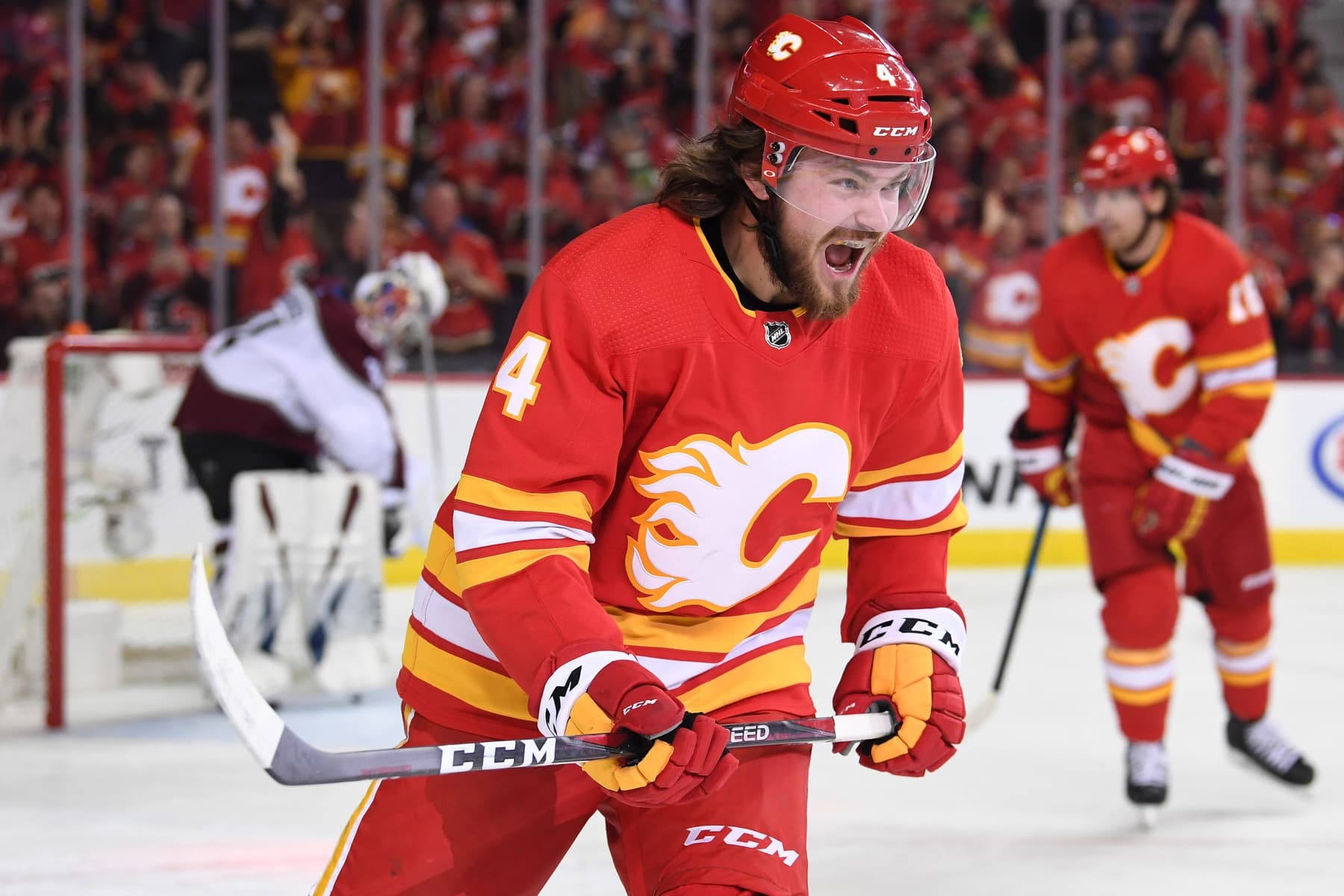How will the Flames replace Travis Hamonic?

By Ryan Pike
3 years agoThe Calgary Flames open Phase 3 training camp on Monday as they prepare for the beginning of the 2020 Stanley Cup playoffs in just under three weeks. And the Flames will be trying to make a push into the deep waters of the post-season without the services of Travis Hamonic.
So how can the Flames get along with Hamonic in their lineup?
Hamonic is a 29-year-old (30 in August) right shot defender. He’s played 637 NHL games, plus 22 in the playoffs, and he’s what coaches tend to call “a steady defender.” Is he flashy? Nope. But he’s the type of reliable, physical, meat-and-potatoes defender that coaches love to have because they give honest minutes and allow you to use your brainpower to try to work on other parts of your lineup.
Hamonic typically plays on the second pairing at five-on-five and on the top pairing on the penalty kill. He never plays power play.
So how can the Flames work around his absence?
(Unless otherwise noted, stats cited here are via Natural Stat Trick.)
Even strength
Five-on-five, Hamonic played 647:13 with Noah Hanifin. Of the team’s most-used regular pairings, they received the least frequent offensive zone starts – Giordano/Brodie and especially Kylington/Andersson got more high ground.
No Hamonic essentially begs one question: who plays with Hanifin instead? If we assume that Geoff Ward leans on his most-common surviving pairing, Mark Giordano and TJ Brodie, as his top unit, that leaves Rasmus Andersson to play with Hanifin.
Aside from familiarity, Giordano and Brodie were a damn fine pairing. They were an effective possession pairing – 53.3% Corsi For, 52.3% Scoring Chances For and 51.0% High-Danger Chances For – and did so despite starting more shifts away from the offensive zone than inside it. And even if not by default, Hanifin and Andersson played well together: 51.9% Corsi For, 53.4% Scoring Chances For and 55.3% High-Danger Chances For. They got slightly more frequent offensive zone starts than Hanifin did with Hamonic, but they used them well.
But once the top four is set up, that leaves the odds and sods for the third pairing. If you stack up your top two pairs, it removes Ward’s ability to use Andersson to elevate another defender on the last pairing. (Aside: Andersson had great results with all of his regular partners, but he also got the most consistent offensive zone starts of any regular defender.)
Here’s a quick tour of what’s left in terms of pairs that played 30+ minutes together at five-on-five:
| Left | Right | CF% | SCF% | HDCF% |
| Oliver Kylington | Alexander Yelesin | 52.9 | 48.3 | 64.3 |
| Derek Forbort | Erik Gustafsson | 42.7 | 42.3 | 48.2 |
| Oliver Kylington | Michael Stone | 42.1 | 38.0 | 31.7 |
Ward’s tendency has been to go with what he knows, which most recently was a Forbort/Gustafsson third pairing. (This would put Kylington, Stone and Yelesin on the sidelines.) But this approach also really leans on the “small sample size” argument, given that Forbort and Gustafsson weren’t great together when they played. Perhaps they’ll find their mojo, or perhaps the Flames will need to lean heavily upon their top four to work around a weak third pairing.
Penalty killing
The bad news is Hamonic played with Giordano, typically on the top PK pairing. The good news is that the simplest thing to do is keep the primary second pair together (Hanifin with Brodie) and then drop in Forbort with Giordano.
This does, however, make line changes near the end of special teams play challenging: Andersson and Gustafsson would be the odd men out from the PK groups and so they’d need to be swapped onto one pair or the other near the end of kills to keep the defensive rotation going. (I would imagine Andersson would be the preferred option given how top-heavy the pairings are likely to be.)
In other words
Losing Hamonic is a big hit, but it’s not the end of the world. It will make the Flames more of a two pairing team, even with the trade deadline acquisitions and the club’s internal depth.
Recent articles from Ryan Pike





